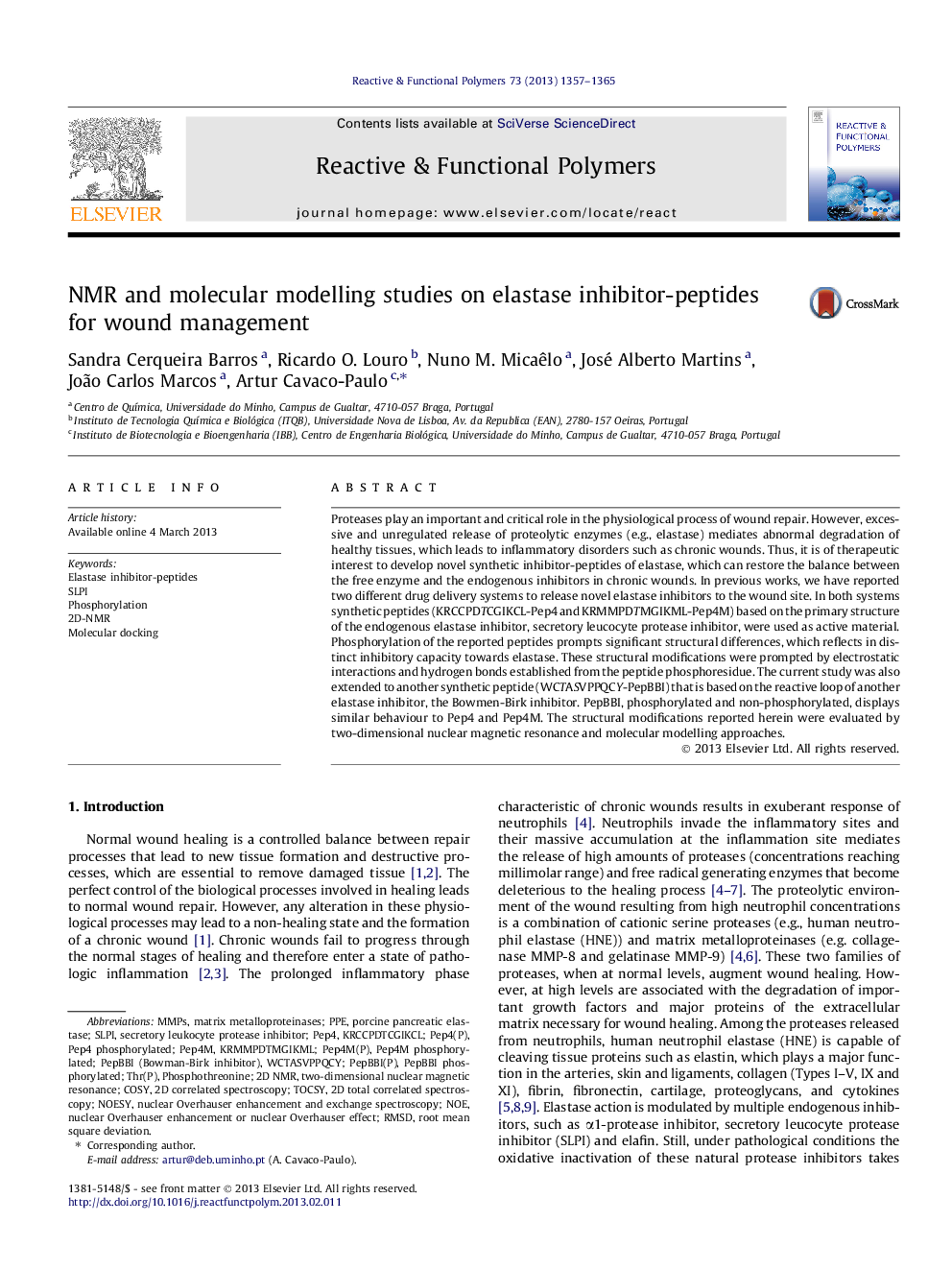| Article ID | Journal | Published Year | Pages | File Type |
|---|---|---|---|---|
| 5210078 | Reactive and Functional Polymers | 2013 | 9 Pages |
Abstract
Proteases play an important and critical role in the physiological process of wound repair. However, excessive and unregulated release of proteolytic enzymes (e.g., elastase) mediates abnormal degradation of healthy tissues, which leads to inflammatory disorders such as chronic wounds. Thus, it is of therapeutic interest to develop novel synthetic inhibitor-peptides of elastase, which can restore the balance between the free enzyme and the endogenous inhibitors in chronic wounds. In previous works, we have reported two different drug delivery systems to release novel elastase inhibitors to the wound site. In both systems synthetic peptides (KRCCPDTCGIKCL-Pep4 and KRMMPDTMGIKML-Pep4M) based on the primary structure of the endogenous elastase inhibitor, secretory leucocyte protease inhibitor, were used as active material. Phosphorylation of the reported peptides prompts significant structural differences, which reflects in distinct inhibitory capacity towards elastase. These structural modifications were prompted by electrostatic interactions and hydrogen bonds established from the peptide phosphoresidue. The current study was also extended to another synthetic peptide (WCTASVPPQCY-PepBBI) that is based on the reactive loop of another elastase inhibitor, the Bowmen-Birk inhibitor. PepBBI, phosphorylated and non-phosphorylated, displays similar behaviour to Pep4 and Pep4M. The structural modifications reported herein were evaluated by two-dimensional nuclear magnetic resonance and molecular modelling approaches.
Keywords
2D total correlated spectroscopyMmpsRMSD2D-NMRPep4SLPIPPETOCSYNOESYNOE2D NMRnuclear Overhauser enhancement and exchange spectroscopyPorcine pancreatic elastasetwo-dimensional nuclear magnetic resonancephosphothreoninePhosphorylationMatrix metalloproteinasessecretory leukocyte protease inhibitorroot mean square deviationMolecular dockingCOSY
Related Topics
Physical Sciences and Engineering
Chemistry
Organic Chemistry
Authors
Sandra Cerqueira Barros, Ricardo O. Louro, Nuno M. Micaêlo, José Alberto Martins, João Carlos Marcos, Artur Cavaco-Paulo,
